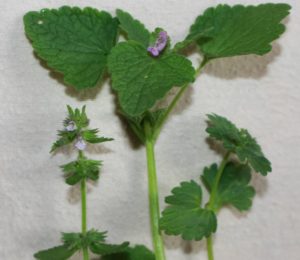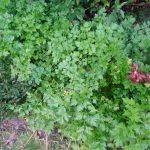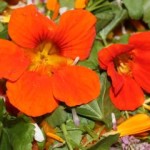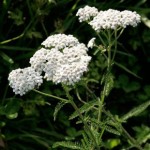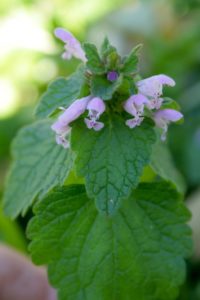 My ‘edible weed’ rambling this month covers three plants similar in appearance, although possessing distinct differences which I can clearly see having all three lined up together.
My ‘edible weed’ rambling this month covers three plants similar in appearance, although possessing distinct differences which I can clearly see having all three lined up together.
They all have leaves somewhat similar to nettle, however the resemblance ends there for they are ‘dead’ and don’t sting.
Red/purple dead nettle Lamium purpureum is a widespread and common annual which can grow up to 50cm tall. It likes loose garden soils, river beds, arable land, driveways, footpaths, waste places. Such a variety of habitats shows its adaptability and it grows all year round. Its distinguishing feature is the tinged purple whorls of leafy flower-heads and reddish-purple hooded flowers that have spots of dark purple on the lower lips. The heart shaped leaves are in opposite pairs with long leaf stalks, the stalks getting shorter up the stem. Like all plants in the Lamiaceae or mint family it has square stems (which are hollow) and contains the volatile oil Germacrene produced by the plant for its antimicrobial and insecticidal properties, which protects the plant from being badly eaten, but I have seen the odd hole in the leaves. Bees like to pollinate the flowers.
Henbit Lamium amplexicaule is also an annual with a sprawling growth habit and it likes to grow in similar places to red deadnettle. To identify it you’ll see longer sections between leaves and near the top there are no leaf stalks, rather the rounder and smaller leaves clasp around the square stem which is also hollow. Bees go for the small flowers tucked into the leaves.
Staggerweed Stachys arvensis is the third look alike in this mint family trio. It is upright up to 50cm or sprawls and is an annual. It differs from the other two by having soft bristly, hairy stems that are solid, not hollow. The leaves are heart shaped but smaller than reddead nettle. The flowers are more lilac than pink/purple and the top lip is shorter than the bottom one, the other two plants have longer top lips that arch over the bottom lip. Its name comes from sheep staggering around when they’ve eaten too much, making them move on to new pasture.
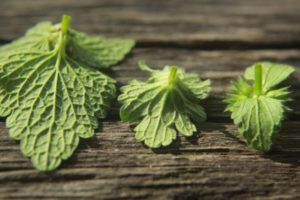
reddead nettle, left, henbit, centre, stagger weed right. All three have raised veins on the back of the leaves.
This plant doesn’t have any smell and is not strong tasting either. We can harvest the young leaves of all three plants and use in salads and smoothies or use them in cooking e.g. stir fries, soup or omelettes. The smell of red deadnettle is quite pungent when the plant flowers (less when young) and I didn’t like it, however taking the time to chew it I find it has almost a sweet taste and a bit peppery. Other people tell me they like it as well. However, we’re all individuals and it is important to pay attention to how our body reacts to different plants. Till next time.
